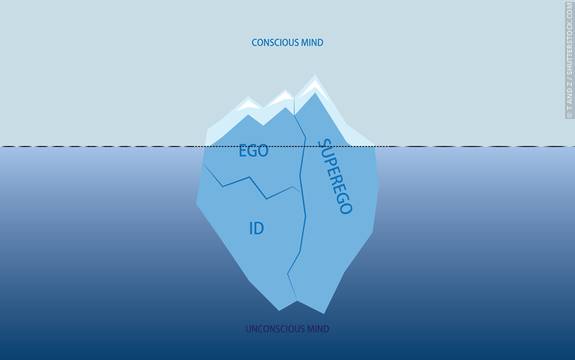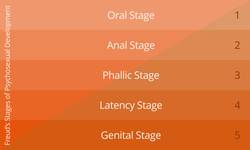The theories of Austrian-born neurologist Sigmund Freud (1856-1939) had a tremendous impact on the field of psychology - both on our understanding of the mind and on our approach to addressing psychological issues.
Through his psychodynamic theory of the psyche, Sigmund Freud asserted that our behavior and the mental issues that we suffer can be traced beyond our conscious self-control - that our subconscious mind, and the innate impulses that we may not be aware of, are what influence the way in which we behave.
Approaches in Psychology
Freud was an early adopter of talking therapy, which supposes that by talking about a problem with a psychoanalyst, a person can identify any issues which may have occurred earlier in life and in turn, overcome the current internal conflicts of their subconscious mind.
In this article, we will look at Freud's unique approach to the human psyche and the case study which shaped it. We will also explore the psychodynamic approach and consider its implications for modern psychology.
The Case of Anna O
The development of Freud's theories of the mind occurred through his observation of patients whilst he was a practitioner. One of his earliest influences was the case of Anna O, a 21-year-old woman whom Freud never actually met, however. A client of Freud's friend, Josef Breuer, Anna was suffering from what was at the time referred to as hysteria. She experienced paralysis on one side, restricting the use of one of her arms, and had developed an aversion to water (hydrophobia), restricting her ability to drink for days at a time. In addition to these symptoms, Anna suffered from involuntary eye movements and other issues which doctors were unable to attribute to a physical condition.
Breuer was interested in the relationship between the events which had occurred earlier in her live and her present conditions. Upon investigation, Anna revealed an occasion when she had been sat next to her father, who was himself ill in bed. In a dream, she saw a black snake coming towards him, but was unable to prevent the snake from travelling closer because she was unable to move one of her arms. This traumatic experience had clearly profoundly affected Anna, and was attributed to her current bouts of paralysis for which no other cause could be found.
After ongoing sessions, Breuer found that Anna's other symptoms could be also traced back to specific experiences earlier in her life. On one occasion, she has been offered a glass of water but had witnessed a dog walk upto the glass and drink from it before she had been able to sip it. Breuer reasoned that this had again affected Anna and had lead to her being unable to drink water later on.
Anna O's sessions with Breuer over a period of time were productive, and after regressing to these anxious moments, she found that she was able to understand their relation to her present irrational symptoms and in turn, overcome them. She referred to this therapy as 'chimney sweeping' and a 'talking cure' - a term which would become synonymous with psychoanalysis.
Freud took note of the case of Anna O and referred to her in his collaborative work with Breuer, Studies on Hysteria (Freud and Breuer, 1895), a book whose attribution of subconscious memories and anxieties to hysteria would lay the groundwork for his psychodynamic theory of the mind.1
The composition of the psyche
Freud's interest was in the dynamics of the mind - the conscious and its subconscious influences. He felt that the energy in the psyche was a constant value, and so instead of disappearing from the conscious, it would build up in the subconscious and cause increasing inner tension until it was addressed. For example, if something angers you, the energy of your anger does not expend itself if you internalise it. Rather, it may be transferred to the subconscious, and lead to a repressed resentment which you may be unaware of on a conscious level.
Freud claimed that the human psyche consisted of three separate areas - the id, ego and superego - which compete against one another for control over our behavior.
The Id
The id (meaning 'it' in Latin) represents our most impulsive, untamed desires, and pay no regard for what is acceptable or reasonable.
Innate instincts such as the need for food, water, warmth and sexual desires originate in our id. In a sense, the id is our 'inner child' - it drives our instinctive behavior from birth and expects its demands to be met immediately, regardless of any consequences. The id abides by the Pleasure Principle, which asserts that we seek to maximise pleasure and avoid pain wherever possible.
Also contained within the id is the death drive, a self-destructive impulsiveness which drives us to the end of our life.
The Ego
The second element of the psyche is the ego, which acts as an intermediary between the unreasonable demands of the id and the outside reality. It tries to satisfy the needs of the id as much as is practically possible without necessarily understanding why some demands might be unreasonable.
The ego remains self-centered and does not give consideration to other people's needs or wishes. It acts based on the Reality Principle, which, in contrast to the Pleasure Principle of the id, accepts the limits of what can be obtained from the outside world.
The Superego
The third component of our psyche is the superego. This feels compassion for others and again tries to satisfy the needs of the id, but understands that some of those needs may adversely affect others. It acts as a filter for our behavior and maintains our conscience, leading to an understanding of other people's emotions and to emotional guilt.
Oedipus and Electra complexes
One way of understanding the id, ego and superego is to consider how they dominate our behaviour during the different stages of the life cycle. Freud identified numerous stages of psychosexual development which we experience, including:
Oral stage
When newborn and in the first few months of our lives, we have a need nourishment. As we feed with the mouth, Freud referred to this as the oral stage.
We expect our need to feed to be satisfied as and when we require food. If it is not satisfied, we begin to crying as we possess no concept of patience or understanding when nourishment is unavailable. This stage, during the first year of our lives, is dominated by the id component of our psyche, as the ego and superego have not yet developed.
Anal stage
As we grow older and begin toilet training, defecation becomes a focus of our needs. During this anal stage, we realise that our needs will be met as they are required, but that we might have to wait (such as waiting to eat whilst food is being prepared). Within reason, we might wait a while for it to be prepared before we resort to crying. During this second stage of our lives, the ego develops and is in regular conflict with the impatient demands of the id.
Phallic stage
At the age of around three, our experience with the outside world has helped to develop the ego. At this point, we recognise our physical existence during what Freud describes as the phallic stage. A recognition of sexuality, Freud claimed, leads to a demand for the attention of the mother in males, in competition with the father. In Greek mythology, Oedipus competes for the attention of his mother, Jocasta, and kills his father, Laius, in the process, and Freud named this jostling for affection the Oedipus complex. In girls, a similar process occurs in relation to the father, and is known as the Electra complex.
As a result of such complexes, we recognise that our needs are unreasonable and may feel guilt for experiencing such desires - feelings resulting from the development of the superego.
Learn more about the Freud's Stages of Psychosexual Development here
Freudian Slips
One other way in which the subconscious reveals its desires is through unintentional slips of the tongue in conversation. These mishaps have come to be known as Freudian slips, named after Sigmund Freud.
Throughout our lives, the subconscious drives of the id dictate our desires and behavior, whilst the ego and superego lead us to temper such behavior. Aside from feelings of guilt when we realise these desires, we may repress them so that we do not need to recognise that we experience them. Freud believed that this tension between the demands of the id, ego and superego, and the repression of desire in the subconscious mind, can disrupt the equilibrium of the psyche and lead to feelings of anxiety and other problems, such as in the case of Anna O. One way to resolve this imbalance is to bring repressed feelings and memories into the conscious so that we can rationalise and understand them.
The psychodynamic model today
The explanation of the mind that the psychodynamic model provides gained traction among psychoanalysts during the early 20th Century. However, numerous psychologists have since questioned how effectively it can be used to understand a person's condition.
Critics argue that by attributing our behavior to earlier experiences during childhood, psychodynamic theories ignore our ability to control our behavior using our own free will. The psychodynamic approach takes what is effectively a reductionist view of the human mind and our own self-control over our destinies.
Moreover, psychodynamic theories take a purely internalised view of behavior, ignoring external factors such as the biological influences of genetics on our predisposition to some mental problems. Whilst Freud did provide case studies of clients with regards to his theories, psychodynamic explanations are by their very nature difficult to either prove or disprove, lacking evidence that might be gained empirically through experiments.
Nonetheless, the influence of Freud and the psychodynamic model of the mind can be felt today in the field of psychology. The 'talking cure' remains a key tool for psychoanalysts even when some of Freud's more tenuous theories have been called into question.































